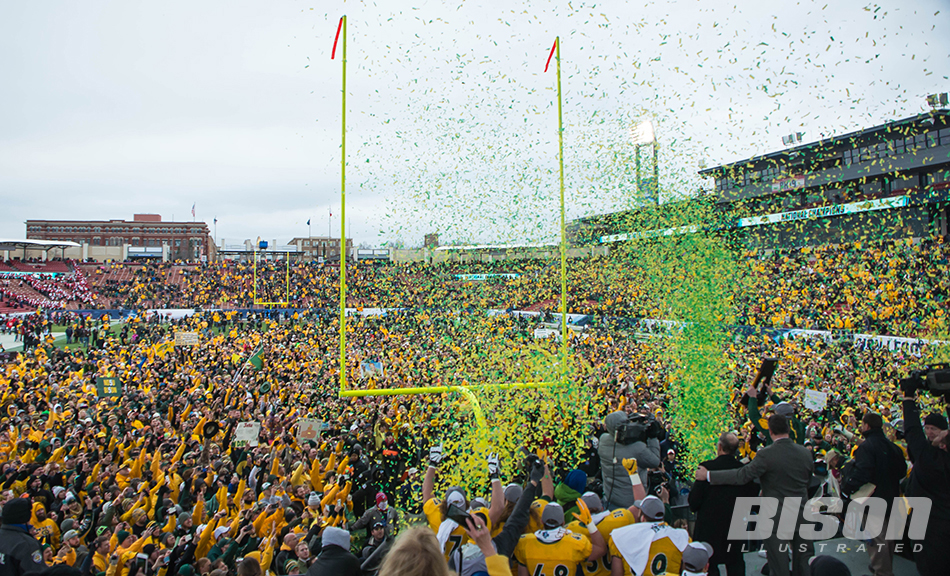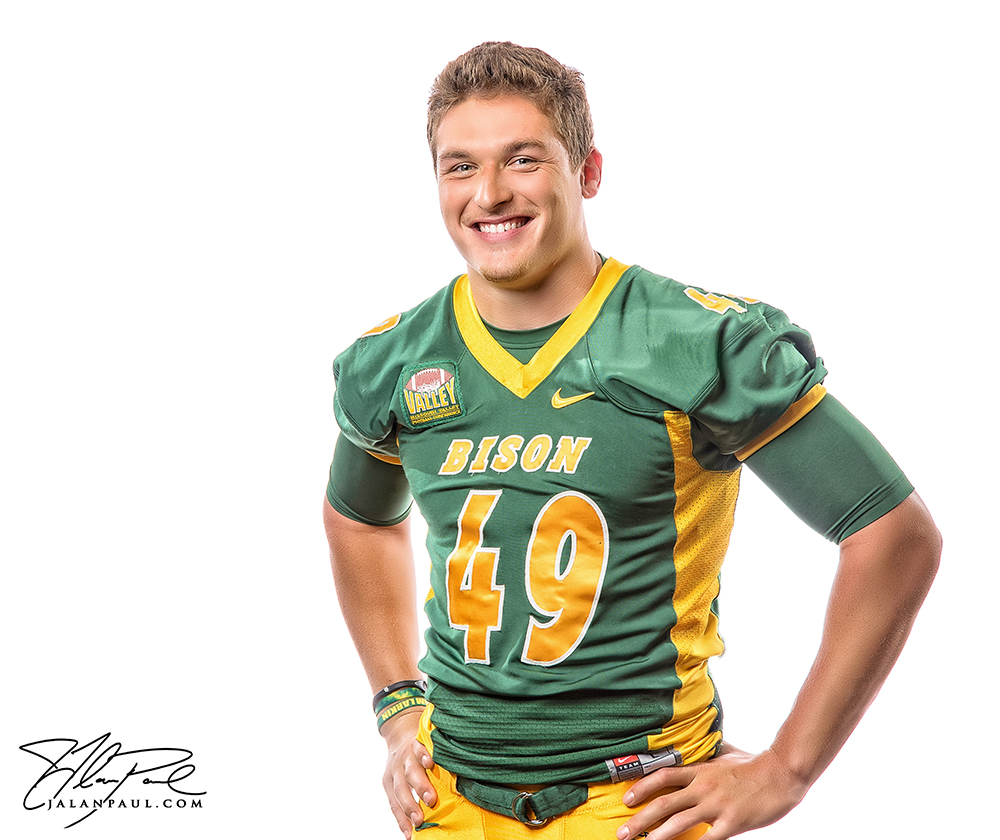Meet one of the men that is responsible for keeping your favorite players on the field and off the injury report.
Photos by J. Alan Paul Photography
Dr. Bruce Piatt is the medical director and orthopedic surgeon on staff at NDSU. He overlooks all of the athletic trainers, strength coaches and works with athletes on preventative medicine and nutrition. For 17 years, Dr. Piatt has been on the sidelines and behind the scenes at NDSU working to decrease the risk of injuries and maintain healthy athletes.
When did you know you wanted to be involved with Sports Medicine?
“As far back as I can remember. I have always been attracted to sports and athletics, therefore it morphed into working with orthopedics so my whole life this is what I have wanted to do.”
How much have you been around this team?
“I am in constant contact with them. All the trainers have my cell phone number and constantly contact me. I actually come to the university once a week and I come for the games in football.”
How many athletes do you see a week?
“It’s variable. This week I saw 13 kids and they’re all sports, not just football.”
What’s the protocol for an injury on the field during a game? Let’s use Grant Olson’s knee injury as an example.
“First, the trainer will evaluate it on the field, as soon as he recognizes that it’s something that’s a little more complicated, he’ll involve me or one of the other orthopedic surgeons if it’s a ligament injury. If it’s a head or neck injury, it would not only be us, it would be our primary guys that are involved. If it was more of a life-threatening kind of injury, then we make sure it’s safe to get him off to the sideline then we do a more thorough evaluation. On the field, it’s more assess if we have a life or limb threatening problem.”
Olson stayed on the sidelines for the rest of the game. What was the process after the game?
“With Grant (Olson), we understood that he had a significant injury and most of the time we know through the exam, and a lot of the times the studies like an MRI are more of a confirmation. In his case, since we knew his season was done based on his exam, we did the MRI on Monday. Sometimes, if we aren’t sure what’s going on with that guy, after the game, we will transport him immediately to a hospital to get the MRI. It just depends on the athlete and the injury.”
Injuries are a harsh reality; what kind of injuries are you checking out the most?
“Primarily, I deal with is the sports related injuries. Mostly knee and shoulders, but we’ll take care of ankles and I have partners that do a lot of the hip work and injuries.”
A big issue now with football is concussions. How has your diagnosis process changed over the past few years?
“Tremendously. In my first few years, we didn’t have any guidelines, and so it was more of a feel with what you had with the athlete. Now, it’s very strict. We know now if there’s any loss of conciseness, they’re done. If they don’t have a clear neurologic exam, they’re done. They will go into a protocol on how to evaluate the next 24 to 48 hours and follow up during the week.”
Has it become stricter in regards to asking the athletes if they’re okay to play or is it entirely your call?
“It’s always our call. If we assess an injury isn’t significant enough to cause damage to continue to participate, then it’s up to them and making a decision. Whether they have enough pain control to get out there, if it’s something that they’re potentially risk damage, and then they’re done. We make that decision.”
How well do you think this staff performs compared to the other staffs in the area?
“I think I have a great group that I am working with and I have worked at many different levels at the professional level and I would put this staff right up there and they’re equal to those programs. We do a really good job. You don’t always get it perfectly right but we sure are going to give it the effort for the athletes.”
You have been here for quite some time. Have you evolved into a member of Bison Nation?
“Yeah, I think I bleed green and gold now.”
-This is Dr. Piatt’s 20th year of practice and 17th season at NDSU.
-Knowing his whole life he wanted to be involved in sports, Dr. Piatt became an athletic trainer before medical school in Colorado and his fellowship at Steadman Hawkins Clinic.
-Only NDSU football has two orthopedic surgeons, two primary care sports medicine staff, five to six full-time athletic trainers and two chiropractors.








